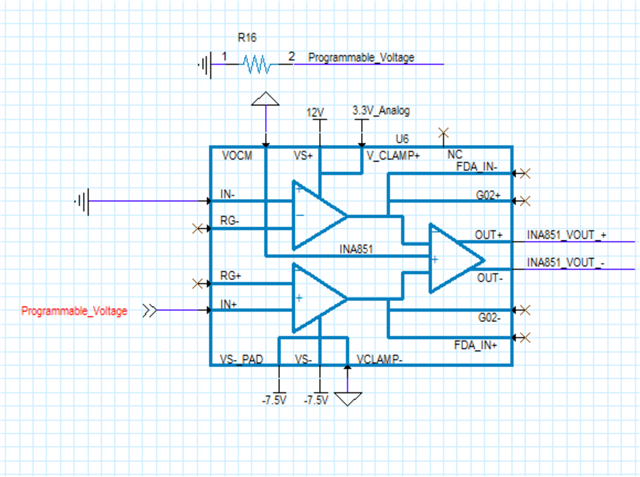Other Parts Discussed in Thread: INA851, INA333, INA290, LM7705
Hello TI E2E,
I have a programmable current source that can range from less than 1mA to over 6A. It has a low side power resistor (~0.45ohms), and the voltage across this with a kelvin connection will be used to measure the current with a fully differential 3 channel 24 bit ADC. These ADC channels can also be turned into 6 single ended channels as well. The accuracy of this voltage measurement will be critical to the error in the programmable current. Brainstorming a way to obtain an error as low as possible is the reason for this post.
I have read many sections of TI's website on programmable gain amplifiers, current sense amplifiers, and instrumentation amplifiers over the past two weeks and am trying to finalize this design. I am strongly leaning towards using either 3 current sense amplifiers or 3 instrumentation amplifiers to measure the voltage with a specific gain dependent upon current level (or some combination of the two). This measured voltage will be used to calculate the current and then a control algorithm will be used to control current variations. For instance, if one of the amplifiers had a gain range of 200V per volt then this could be used to sense currents from 100uA to 30mA. Another amplifier with a gain of 25 could be used to sense current ranges from ~ 30mA to 300mA. Finally, an amplifier with a gain of ~ 1V/V could be used to sense currents from 300mA to 6A.
Specifically, I was thinking of using the INA190 family of current sense op amps to sense the very low current ranges (gains of 200 and 25) and an INA851 with a gain of 1 for the high current range.
The INA851 is fully differential output while the INA190 are single ended. I am cautious of very small ground differences between my ADC and these INA190s to be slightly different and multiplied with the gain could add significant error. Therefore, I believe that using 3 INA851 or another fully differential input and fully differential output op amp with these 3 gains might be a better option because the ADC is also fully differential.
Can you please provide me with some guidance on this issue? Would you recommend using three INA851 because of the fully diff input and fully diff output. It also has very high accuracy and options to have multiple gain values if dependent upon external resistor Rg.
Thank You For Your Help,
Brendan


